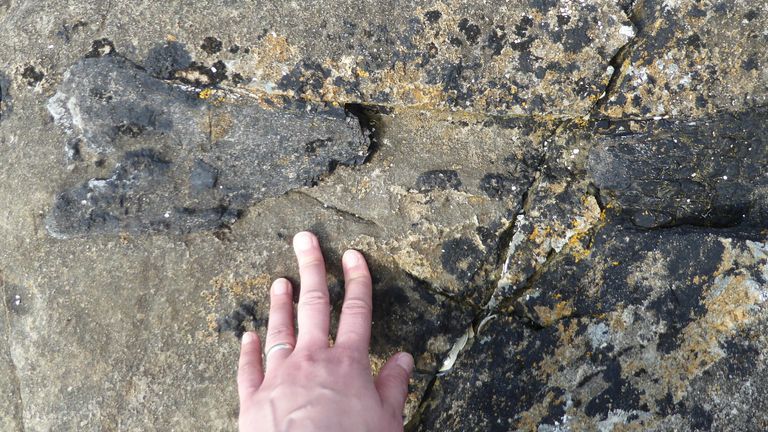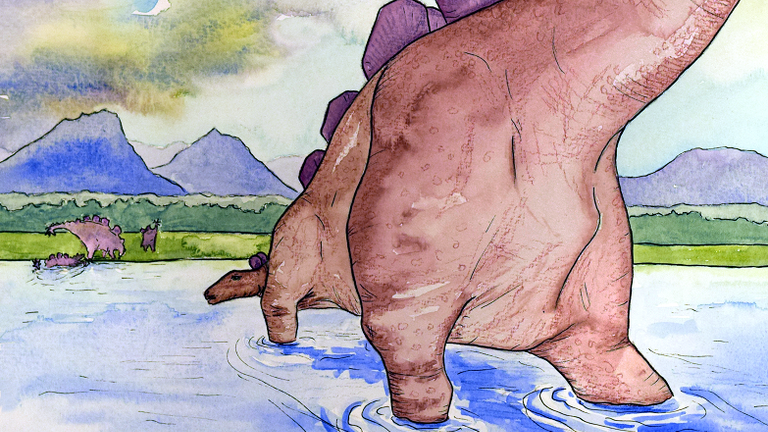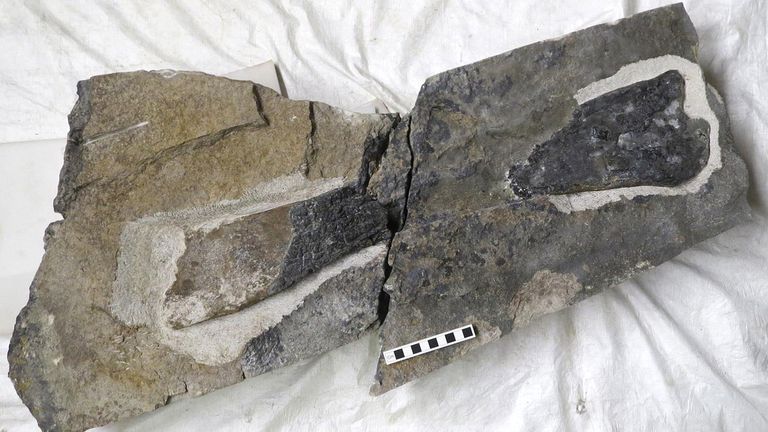A 166-million-year-old dinosaur fossil has been found by a scientist while out running along the beach of a Scottish island.
Measuring around 50cm (19in) long, the ancient limb bone is thought to belong to a stegosaurian dinosaur, such as the recognisable stegosaurus, and dates to the Middle Jurassic period.
Discovered on the Isle of Eigg, it is the first time such a fossil has been discovered in Scotland outside of Skye.
Dr Elsa Panciroli, a research affiliate at National Museums Scotland, made the “hugely significant find” while going to meet her palaeontology colleagues on the inner Hebridean island.
She said: “I was running along the shore on my way back to meet the rest of the team and I ran right over it. It wasn’t clear exactly what kind of animal it belonged to at the time, but there was no doubt it was a dinosaur bone.”
Dr Panciroli said in 200 years of searching the area, “no one has found a dinosaur before, so this is quite special”.
She added: “This is a hugely significant find. Globally, Middle Jurassic fossils are rare and until now the only dinosaur fossils found in Scotland were on the Isle of Skye.
“This bone is 166 million years old and provides us with evidence that stegosaurs were living in Scotland at this time.
“The Middle Jurassic was a really interesting time for animals of all kinds. They were diversifying into lots of different groups and developing new ecologies – ways of life – to exploit their environment.”
The bone was found in a boulder on the foreshore and though it was badly damaged by waves, there was enough remaining for a team of palaeontologists to study.
It was taken to a laboratory to be removed from the rock and was found to be part of the hind limb of a stegosaur. The bone dates to the same period as similar fossils found on Skye.
The Isle of Eigg is already known for its Jurassic fossils, particularly marine reptiles and fish, first discovered by 19th-century geologist Hugh Miller.
Dr Steve Brusatte, of the University of Edinburgh, co-authored a paper on the find.
He said: “Elsa’s discovery of this bone is really remarkable. Nobody, not even Hugh Miller himself, had found dinosaur bones on Eigg before.
“This fossil is additional evidence that plate-backed stegosaurs used to roam Scotland, which corroborates footprints from the Isle of Skye that we identified as being made by a stegosaur.”
The bone is now in the collections of National Museums Scotland in Edinburgh.



